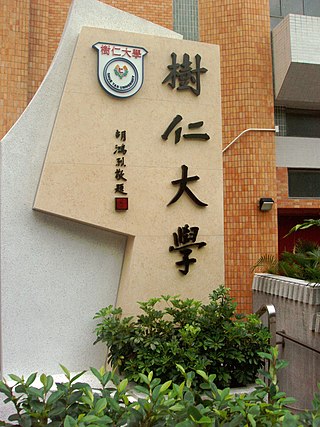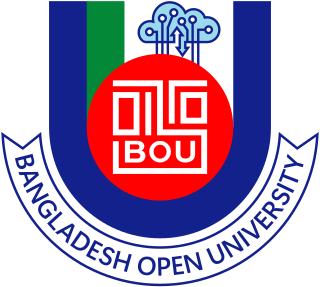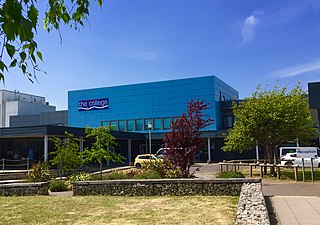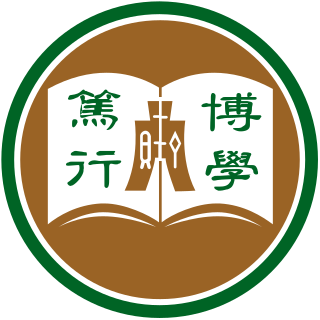
A Bachelor of Arts is a bachelor's degree awarded for an undergraduate program in the liberal arts, or, in some cases, other disciplines. A Bachelor of Arts degree course is generally completed in three or four years, depending on the country and institution.
A bachelor's degree or baccalaureate is an undergraduate degree awarded by colleges and universities upon completion of a course of study lasting three to six years. The two most common bachelor's degrees are the Bachelor of Arts (BA) and the Bachelor of Science. In some institutions and educational systems, certain bachelor's degrees can only be taken as graduate or postgraduate educations after a first degree has been completed, although more commonly the successful completion of a bachelor's degree is a prerequisite for further courses such as a master's or a doctorate.
Degree abbreviations are used as an alternative way to specify an academic degree instead of spelling out the title in full, such as in reference books such as Who's Who and on business cards. Many degree titles have more than one possible abbreviation, with the abbreviation used varying between different universities. In the UK it is normal not to punctuate abbreviations for degrees with full stops, although this is done at some universities.

Dún Laoghaire Institute of Art, Design and Technology, more commonly known as IADT Dún Laoghaire or simply IADT is an institute of technology with a focus on art and design located in Deansgrange near Dún Laoghaire, Ireland. It was established in 1997 and incorporated the former Dún Laoghaire College of Art and Design as its School of Creative Arts.
Philosophy, politics and economics, or politics, philosophy and economics (PPE), is an interdisciplinary undergraduate or postgraduate degree which combines study from three disciplines. The first institution to offer degrees in PPE was the University of Oxford in the 1920s. This particular course has produced a significant number of notable graduates such as Aung San Suu Kyi, Burmese politician and State Counsellor of Myanmar, Nobel Peace Prize winner; Princess Haya bint Hussein, daughter of the late King Hussein of Jordan; Christopher Hitchens, the British–American author and journalist; Will Self, British author and journalist; Oscar-winning writer and director Florian Henckel von Donnersmarck; Michael Dummett, Gareth Evans, Philippa Foot, Christopher Peacocke, Gilbert Ryle, and Peter Strawson, philosophers; Harold Wilson, Edward Heath, David Cameron, Liz Truss and Rishi Sunak, Prime Ministers of the United Kingdom; Hugh Gaitskell, Michael Foot, William Hague and Ed Miliband, former Leaders of the Opposition; former Prime Ministers of Pakistan Benazir Bhutto and Imran Khan; and Malcolm Fraser, Bob Hawke and Tony Abbott, former Prime Ministers of Australia. The course received fresh attention in 2017, when Nobel Peace Prize winner Malala Yousafzai earned a place.
The Master of Architecture is a professional degree in architecture qualifying the graduate to move through the various stages of professional accreditation that result in receiving a license.
Honours degree has various meanings in the context of different degrees and education systems. Most commonly it refers to a variant of the undergraduate bachelor's degree containing a larger volume of material or a higher standard of study, or both, rather than an "ordinary", "general" or "pass" bachelor's degree. Honours degrees are sometimes indicated by "Hons" after the degree abbreviation, with various punctuation according to local custom, e.g. "BA (Hons)", "B.A., Hons", etc. In Canada, honours degrees may be indicated with an "H" preceding the degree abbreviation, e.g. "HBA" for Honours Bachelor of Arts or Honours Business Administration.

Hong Kong Shue Yan University is a private liberal arts university on North Point, Hong Kong Island, Hong Kong.

The Bangladesh Open University (BOU) Bengali: বাংলাদেশ উন্মুক্ত বিশ্ববিদ্যালয় (বাউবি), established on 21 October 1992, is a public university with its main campus in Board Bazar, Gazipur District, Dhaka Division. It is the 8th largest university in the world according to enrolment.

The Bournemouth and Poole College (BPC) is a well established educational provider which delivers further education, higher education and community based courses in Bournemouth and in Poole on the south coast of England. It is one of the largest British colleges with thousands of learners each year.

The Regent University College of Science and Technology is located in Accra, Ghana. It was registered in September 2003, and received accreditation to operate as a tertiary institution in 2004. In January 2005 it started its lectures with 30 pioneer students at Trinity Campus, Mataheko.

A Bachelor of Science is a bachelor's degree that is awarded for programs that generally last three to five years.
ABRS Management and Technology Institute is a Hong Kong based continuing education and training institute established in 1990. and registered with the Education Bureau since 1994.
Creative technology is a broadly interdisciplinary and transdisciplinary field combining computing, design, art and the humanities. The field of creative technology encompasses art, digital product design, digital media or an advertising and media made with a software-based, electronic and/or data-driven engine. Examples include multi-sensory experiences made using computer graphics, video production, digital music, digital cinematography, virtual reality, augmented reality, video editing, software engineering, 3D printing, the Internet of Things, CAD/CAM and wearable technology.
Faculty of Science is one of the eight faculties in University of Peradeniya. It was established as the second Faculty of Science in Sri Lanka in 1961.

Macao Polytechnic University (MPU) is a public university in Macau, China. It was established in 1981.

The Hang Seng University of Hong Kong (HSUHK) is a private liberal arts-oriented university in Sha Tin, New Territories, Hong Kong.
The University of Auckland Faculty of Science is one of eight faculties and schools that make up the University of Auckland.

The Technological and Higher Education Institute of Hong Kong (THEi) is a public vocational college in Chai Wan, Hong Kong Island, Hong Kong.

Middlesex University (MDX) Dubai is an offshore campus of Middlesex University London in Dubai, United Arab Emirates. Situated across two locations in Dubai Knowledge Park and Dubai International Academic City, the campus was inaugurated in 2005 and currently has over 5,600 students from over 120 nationalities studying across both locations. Professor Cedwyn Fernandes is the Director of Middlesex University Dubai, alongside his duties as Pro-Vice Chancellor of Middlesex University London.










